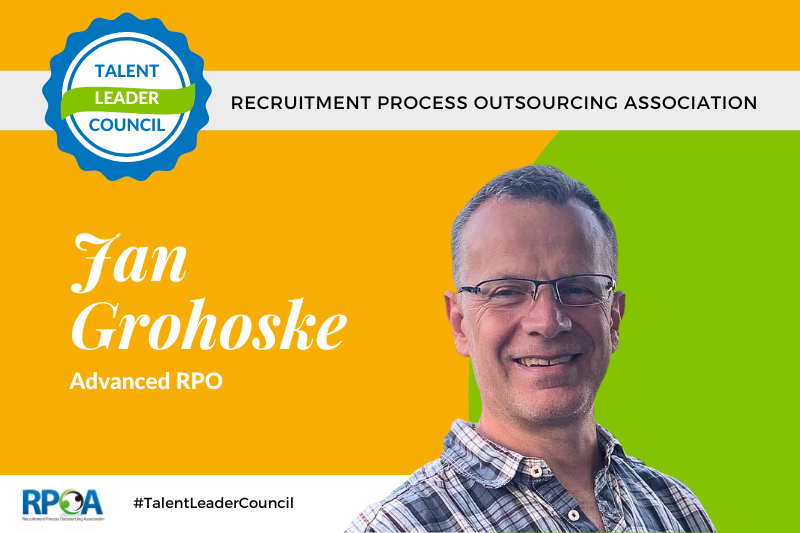
Technology and artificial intelligence (AI) have revolutionized recruitment. In the 1980s, futurists like Kevin Wheeler began working with AI at Stanford and MIT. He has observed that advancements in affordable computers and breakthroughs in neural networks accelerated AI development. During his presentation at the 2023 annual RPOA Conference, Wheeler highlighted the disruptive effects of technology and AI on recruitment, emphasizing the evolution from automating tasks to using AI in candidate screening and sourcing. As we delve into Wheeler's discussion on the complexities and potential of AI in recruiting, it becomes evident that while there are challenges and limitations, the opportunities for streamlining processes and enhancing efficiency are abundant.
Transformation of Internal Recruiting Teams
Wheeler strongly believes that recruitment automation will transform the size and function of in-house recruiting teams. He maintains that automating repetitive recruitment tasks such as candidate communication, scheduling interviews, collecting, sorting, and managing job applications will enable employers to streamline their hiring process and shrink their internal recruiting teams to one—to two-person teams. He contends that streamlining the process will also redirect the focus of recruiting teams toward marketing and branding.
Other industry experts agree with Wheeler that recruitment automation will consolidate the hiring process. They show how integrating the hiring process with technology can benefit one-to-two-person recruiting teams and enable employers to build an effective and creative workforce.
According to Talroo, a data-driven job advertising platform, automation in recruitment can help small internal recruiting teams to:
-
Enable targeted candidate outreach and boost efficiency.
-
Enhance the application process and provide timely communications that will give candidates a positive experience and create a clear and compelling impression of the company, which will attract quality talent.
-
Bring together and analyze data to make informed decisions about candidate sourcing, engagement, and conversion, optimize recruitment strategies, and improve hiring outcomes.
In addition to changes in the above functions, Wheeler said that other recruitment functions will be outsourced, automated, or augmented through artificial intelligence (AI). Those other functions include:
-
Sourcing,
-
Branding,
-
Writing and posting job descriptions,
-
Screening candidates for skills and abilities to match them to jobs,
-
Chating and engaging with candidates in conversation,
-
Administrating and generating reports
-
Writing offer letters
-
Recommending salary levels,
Current Uses of AI in Recruitment
Wheeler pointed out that companies already employ AI to handle functions that include:
Screening applicants: Chatbots start screening candidates when they log onto a career page. The most effective chatbots use AI to generate realistic questions and answers while engaging with the candidate.
Sourcing: Employers have started automating candidate searches. Wheeler said that he works with a Singaporean company that hires about 15,000 people per year, and it employs two people to source the candidates.
Interviews: Companies are also using automation to pre-select candidates for interviews and schedule the interviews.
Onboarding: The automated onboarding process provides new employees with personalized information, videos, and more.
Challenges and Limitations of AI in Recruiting
Wheeler observed that the main challenges in adopting AI for recruiting are investment and willingness. A survey by Leoforce revealed many of the challenges and limitations of AI in recruiting. Its survey showed that only 30 percent of HR and TA leaders use AI, mainly for a quarter of their recruitment process. That same survey also showed that 64 percent of companies are still at the evaluation stage of increasing their investment in automation and AI recruiting solutions. Wheeler believes that innovative leaders with a budget will increase the adoption of AI in recruiting.
RPO Leadership Forum member John Fitzgerald highlighted possible reasons for the challenges and limitations of integrating AI into their recruitment process. He said that some challenges associated with AI in talent acquisition include discrimination, bias, lack of transparency, and a homogenous workforce. If AI models are not provided with diverse code or detailed information, they may lead to unintended consequences. During the RPO Leadership Forum webinar, he pointed to some limitations of AI in video interviews and the potential biases of sentiment analysis and scoring algorithms. Lack of transparency in AI models can lead to discrimination and reduced diversity in the workforce. However, Wheeler is optimistic and believes AI will become less biased and provide far more accurate and relevant information about a candidate than a human recruiter. He also said that overall, AI is currently less biased than humans.
Despite Wheeler's optimism that AI is more unbiased than humans, talent leaders such as Fitzgerald say it's essential to consider the limitations of integrating AI into recruitment processes. In our RPO Leadership Forum webinar, he clarified that AI should augment Human Resources and TA tasks. He noted that AI has limited judgment and a different level of insight than people, and there is too much risk associated with depending only on AI.
In Conclusion
Integrating artificial intelligence (AI) in recruitment has brought about significant transformations, from automating repetitive tasks to revolutionizing how companies source, screen, and onboard candidates. While there are challenges and limitations to overcome, such as bias and transparency, the potential benefits of AI in recruitment are undeniable. As AI technology advances, it is crucial for organizations to carefully consider and use the capabilities of AI to improve their recruitment strategies. With suitable investment and innovation, AI has the potential to streamline processes, enhance candidate experiences, and ultimately contribute to building more robust, more diverse workforces.





-min.jpg)
.jpg)







